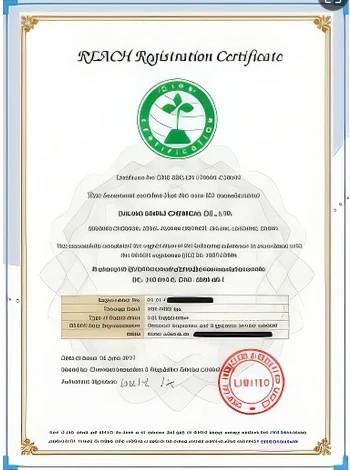



ph sodium bisulfite
Understanding Sodium Bisulfite and Its pH Properties
Sodium bisulfite, a chemical compound with the formula NaHSO₃, is a versatile substance widely used in various industries, including food processing, photography, and water treatment. One of the key aspects of this compound is its pH properties, which play a significant role in its application and effectiveness.
Chemical Structure and Properties
Sodium bisulfite is an inorganic salt consisting of sodium cations (Na⁺) and bisulfite anions (HSO₃⁻). It is typically encountered as a white crystalline powder or a colorless solution when dissolved in water. This compound is hygroscopic, meaning it can absorb moisture from the air, which can lead to caking if not stored properly. Sodium bisulfite is soluble in water, and its solutions are generally acidic.
When sodium bisulfite dissolves in water, it partially dissociates to produce sodium ions and bisulfite ions. The bisulfite ion can further react with water to generate sulfurous acid (H₂SO₃), contributing to the solution's acidity. The pH of a sodium bisulfite solution usually ranges from 4.0 to 5.0, depending on the concentration. This acidic nature can be essential for its various applications, particularly in the food and beverage industry, where controlling pH levels is crucial for product quality and preservation.
Applications of Sodium Bisulfite
1. Food Preservation Sodium bisulfite is commonly used as a food preservative and antioxidant. It is effective in preventing spoilage caused by microorganisms and oxidation, particularly in dried fruits, wines, and certain vegetables. Its ability to inhibit enzymatic browning in fruits and vegetables helps maintain their color and flavor.
ph sodium bisulfite

2. Water Treatment In water treatment processes, sodium bisulfite is used to dechlorinate water by neutralizing chlorine and chloramine. This is particularly important when treating wastewater or preparing drinking water, ensuring that harmful chlorinated compounds are removed.
3. Photography In the realm of photography, sodium bisulfite serves as a preservative for developing solutions and as a reducing agent in various chemical processes. Its ability to stabilize the photographic image and prevent oxidation makes it invaluable in this field.
4. Chemical Reactions Sodium bisulfite is also employed as a reducing agent in organic chemistry. It can be used in the synthesis of various compounds, including sulfonamides and other fine chemicals. Its reducing properties are utilized in redox reactions, making it a valuable reagent.
Safety and Handling
While sodium bisulfite is widely regarded as safe for use in food and industrial applications, it is essential to handle it with care due to its acidic nature and potential for causing respiratory irritation. Individuals working with sodium bisulfite should wear appropriate personal protective equipment, including gloves and masks, to minimize exposure to dust and fumes. Additionally, those with sulfite allergies should avoid consuming products containing sodium bisulfite.
Conclusion
Sodium bisulfite is an important chemical compound with diverse applications, primarily due to its pH properties and reducing capabilities. Its acidic nature is not only crucial for its role in food preservation and water treatment but also highlights the importance of pH management in various industrial processes. Understanding the properties and applications of sodium bisulfite can help industries optimize their production methods and improve product quality while ensuring safety and compliance with regulations. As research continues and new applications are explored, sodium bisulfite is likely to remain a vital compound in both industrial and consumer settings.
-
Why Sodium Persulfate Is Everywhere NowNewsJul.07,2025
-
Why Polyacrylamide Is in High DemandNewsJul.07,2025
-
Understanding Paint Chemicals and Their ApplicationsNewsJul.07,2025
-
Smart Use Of Mining ChemicalsNewsJul.07,2025
-
Practical Uses of Potassium MonopersulfateNewsJul.07,2025
-
Agrochemicals In Real FarmingNewsJul.07,2025
-
Sodium Chlorite Hot UsesNewsJul.01,2025










